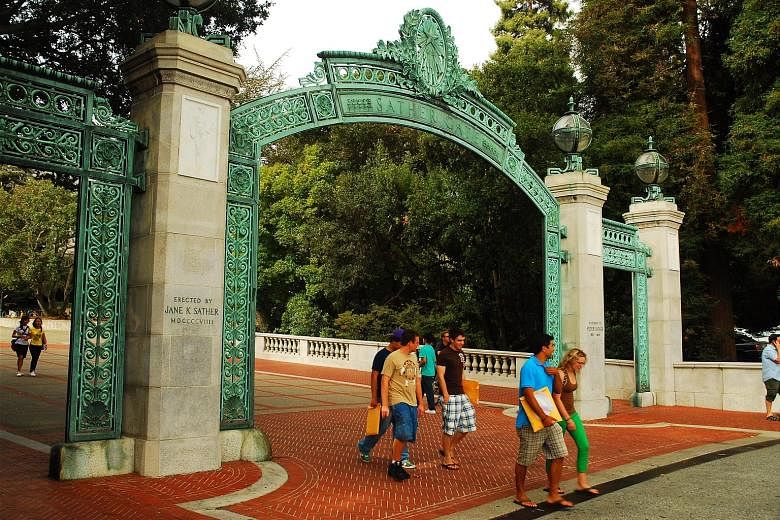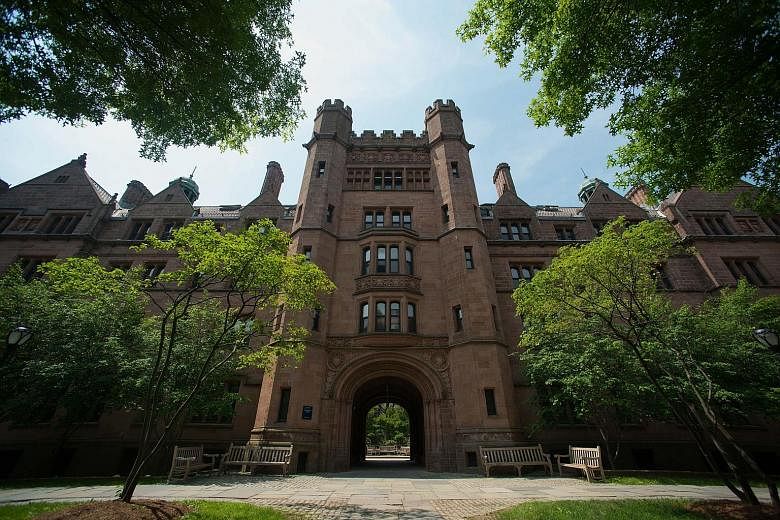For the first time, neither of the top two institutions in the just-released Times Higher Education World University Rankings is in the US.
Instead, they - the University of Oxford and the University of Cambridge - are both in England.
Given that Times Higher Education (THE) magazine is also based in England and a significant part of its ranking is based on a reputation survey conducted among academics, you may wish to take this result with a grain of salt.
The Academic Ranking of World Universities (ARWU) from the ShanghaiRanking Consultancy, which is based solely on output measures such as prizes won by faculty members and articles published in top journals, put Harvard and Stanford universities in the top two spots in its latest edition last month, with Cambridge in third place, Oxford in seventh and US universities filling out the rest of the top 10.
The QS World University Rankings from the career and education networking company formerly known as Quacquarelli Symonds, which came out in June and are tilted heavily towards reputation, gave the top four spots to US institutions - although the next four did go to English ones.
FLAWED BUT NOT FLATTERING
All these rankings are of course flawed, incomplete and backward- looking and all the other bad things you can say about academic rankings.
But they are also really interesting - especially if you look back a few years. What they show is not entirely flattering to the system of higher education in the United States.
The first ARWU top 10, in 2003, was remarkably similar to today's: The top two are the same as in the latest ranking, and seven of the other top-10 members from that list are still in the top 10.
The only exception is Yale University, which fell from eighth place then to 11th now, and was replaced by the University of Chicago, 11th place in 2003.
THE and QS used to do their rankings jointly; the first one, in 2004, put Harvard in first place and the University of California at Berkeley, which is now 18th on the THE list and 27th on the QS list, in second.
Yale, No. 8 on that list, has also fallen out of the top 10 on both lists, although only to 12th and 16th places, respectively. Berkeley's fall seems more significant.
But first, let's look way beyond the top 10. The ARWU makes this the easiest, with an unbroken history of top-500 rankings since 2003 and handy statistical summaries since 2004. So here are the numbers since 2004 for the five countries with the most top-500 universities in 2017.
China's totals include universities in Hong Kong, Macau and Taiwan. This year, Taiwan had seven universities in the top 500, Hong Kong five and Macau 0 (it did have two in the next 500). So mainland China, with 45, would also have come in second without them. Its rise has been impressive, with the caveat that the ARWU was originally designed to track the global standing of Chinese universities, and is focused on the hard-science metrics emphasised by the Chinese educational system.
Still, Chinese institutions have also been rising in other rankings.
Beijing's Tsinghua University is now No. 25 on the QS ranking, and its neighbour Peking University is tied for 27th (with the University of Edinburgh and New York University) on the THE list.
NTU ON THE RISE TOO
Also, a kindred spirit, Singapore's Nanyang Technological University (NTU), is on the verge of breaking into one of the ranking's top-10 lists for the first time after placing 11th on the latest QS ranking.
And of course Australia is full of students from China.
Japanese universities, on the other hand, have lost status in a big way. In 2004, the country ranked fourth among nations, with 36 universities in the ARWU top 500. Now it is in eighth place, with 17. Other losers include Italy (23 to 16), Canada (23 to 19), France (22 to 20) and Hungary (three to zero).
Big gainers besides China and Australia include South Korea (eight to 12) and Portugal (one to five).
Then there is the US, which has dropped from having 170 universities in the top 500 to 135.
Part of this is just the rest of the world catching up with the leading higher-education provider, which is not necessarily an unhealthy development. But there are a couple of worrying signs.
One is that Europe has not lost nearly as much ground as the US (Latin America went from seven in the top 500 to nine, so all the losses for the Americas are from the US and Canada).
The other issue is which universities are falling down the ranks. Elite US private universities are doing better than fine: There are 12 of them in the latest ARWU top 20, up from 10 in 2004. But state universities are not. There are four in the top 20 this year, down from seven in 2004.
They do even worse in the THE and QS rankings, with only two (the University of California at Los Angeles and UC Berkeley) in THE's top 20 and none in the QS top 20 (the University of Michigan is at 21st).
And in the lower rungs of the top 500, where most of the US attrition has been occurring, it is generally public institutions that are doing the falling.
There is a simple explanation for this: Public funding for higher education stopped going up in the US a while ago. From 1991 to 2016, according to the State Higher Education Executive Officers Association, the inflation-adjusted dollars appropriated per full-time equivalent student at public universities in the country fell 17 per cent, while per-student tuition charged by state institutions rose 104 per cent.
STINGIER WITH FUNDING
There has been a modest funding recovery lately, with per-student appropriations up 3 per cent from 2011 through 2016. But on the whole, the US has been getting stingier with public higher education, just as much of the rest of the world has been investing more in it.
University administrators and professors outside the US are well aware of this, and I think that is why top US public universities have fallen further in the partly reputation-based THE and QS rankings than the purely outcome-based ARWU one.
It is possible that this reputational decline is predictive of a decline in outcomes. And while their most prestigious private counterparts are still doing great, public institutions educate far more students in the US (3.3 times as many undergraduates in 2014, according to the National Centre for Education Statistics) and do far more research and development.
If they keep losing ground, the country is going to feel the effects.
BLOOMBERG
• Justin Fox is a Bloomberg View columnist. He was the editorial director of Harvard Business Review and wrote for Time, Fortune and American Banker. He is the author of The Myth Of The Rational Market.


